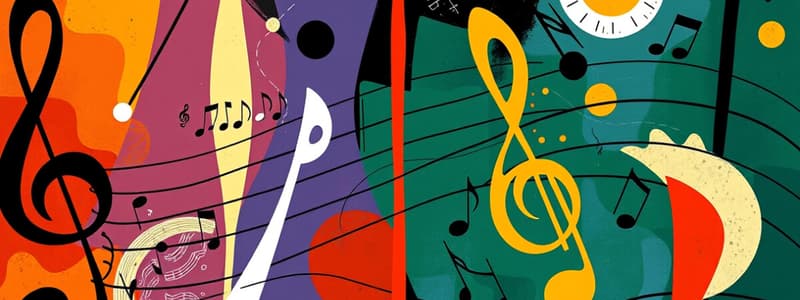Podcast
Questions and Answers
What is rhythm in classical music?
What is rhythm in classical music?
Drive of classical work can be punctuated with small or large pauses.
Classical tuneful ____ often is motivic utilizing only three notes of tonic triad.
Classical tuneful ____ often is motivic utilizing only three notes of tonic triad.
melody
What is harmony in classical music?
What is harmony in classical music?
Classical chord progression often is static allowing focus upon melody.
What role does tone color play in classical orchestras?
What role does tone color play in classical orchestras?
Stating a musical idea and then repeating it is a way to create musical _______.
Stating a musical idea and then repeating it is a way to create musical _______.
Flashcards are hidden until you start studying
Study Notes
Classical Music Elements
-
Rhythm: Drives classical works, characterized by the use of both small and large pauses that create a sense of movement and flow.
-
Melody: In classical music, melodies are often tuneful and motivic, frequently derived from limited note selection, typically utilizing only three notes from the tonic triad.
-
Harmony: The chord progression in classical compositions tends to be static, allowing listeners to concentrate on the melody without overwhelming harmonic changes.
-
Tone Color: Classical orchestras commonly feature pairs of wind instruments, contributing to a rich and diverse tonal palette.
-
Form: A fundamental aspect of musical structure involves stating a musical idea followed by a repetition, contributing to the creation of a cohesive musical narrative.
Studying That Suits You
Use AI to generate personalized quizzes and flashcards to suit your learning preferences.




